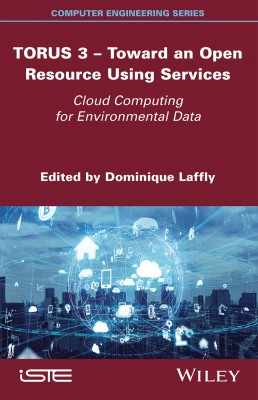
This book, presented in three volumes, examines “environmental” disciplines in relation to major players in contemporary science: Big Data, artificial intelligence and cloud computing.
Today, there is a real sense of urgency regarding the evolution of computer technology, the ever-increasing volume of data, threats to our climate and the sustainable development of our planet. As such, we need to reduce technology just as much as we need to bridge the global socio-economic gap between the North and South; between universal free access to data (open data) and free software (open source). In this book, we pay particular attention to certain environmental subjects, in order to enrich our understanding of cloud computing. These subjects are: erosion; urban air pollution and atmospheric pollution in Southeast Asia; melting permafrost (causing the accelerated release of soil organic carbon in the atmosphere); alert systems of environmental hazards (such as forest fires, prospective modeling of socio-spatial practices and land use); and web fountains of geographical data.
Finally, this book asks the question: in order to find a pattern in the data, how do we move from a traditional computing model-based world to pure mathematical research? After thorough examination of this topic, we conclude that this goal is both transdisciplinary and achievable.
1. Introduction to Environmental Management and Services, Thi Kim Oanh Nguyen, Quoc Tuan Le, Tongchai Kanabkaew, Sukhuma Chitaporpan and Truong Ngoc Han Le.
Part. Environmental Case Studies
2. Air Quality Monitoring with Focus on Wireless Sensor Application and Data Management, Tan Loi Huynh, Sathita Fakrapai and Thi Kim Oanh Nguyen.
3. Emission Inventories for Air Pollutants and Greenhouse Gases with Emphasison Data Management in the Cloud, Thi Kim Oanh Nguyen, Nguyen Huy Lai, Didin Agustian Permadi, Nhat Ha Chi Nguyen, Kok Sothea, Sukhuma Chitporpan, Thongchai Kanabkaew, Jantira Rattanarat and Surusak Sichum.
4. Atmospheric Modeling with Focus on Management of Input/Output Data and Potential of Cloud Computing Applications, Thi Kim Oanh Nguyen, Nhat Ha Chi Nguyen, Nguyen Huy Lai and Didin Agustian Permadi.
5. Particulate Matter Concentration Mapping from Satellite Imagery, Thi Nhat Thanh Nguyen, Viet Hung Luu, Van Ha Pham, Quang Hung Bui and Thi Kim Oanh Nguyen.
6. Comparison and Assessment of Culturable Airborne Microorganism Levels and Related Environmental Factors in
Ho Chi Minh City, Vietnam, Tri Quang Hung Nguyen, Minh Ky Nguyen and Ngoc Thu Huong Huynh.
7. Application of GIS and RS in Planning Environmental Protection Zones in Phu Loc District, Thua Thien Hue Province, Quoc Tuan Le, Trinh Minh Anh Nguyen, Huy Anh Nguyen and Truong Ngoc Han Le.
8. Forecasting the Water Quality and the Capacity of the Dong Nai River to Receive Waste water up to 2020, Quoc Tuan Le, Thi Kieu Diem Ngo and Truong Ngoc Han Le.
9. Water Resource Management, Imeshi Weerasinghe.
10. Assessing Impacts of Land Use Change and Climate Change on Water Resources in the La Vi Catchment, Binh Dinh Province, Kim Loi Nguyen, Le Tan Dat Nguyen, Hoang Tu Le, Duy Liem Nguyen, Ngoc Quynh Tram Vo, Van Phan Le, Duy Nang Nguyen, Thi Thanh Thuy Nguyen, Gia Diep Pham, Dang Nguyen Dong Phuong, Thi Hong Nguyen, Thong Nhat Tran, Margaret Shanafield and Okke Batelaan.
Dominique Lafly is a Professor at the University of Toulouse, France. As a geographer, he is interested in the landscape, and the links between societies and their environment. Concerned with the issue of Big Data, he promotes multidisciplinary programs to bring IT closer to environmental applied disciplines.